Mount Kilimanjaro grabs most of the headlines, with thousands of hikers taking the challenge to reach the summit each year. But, beyond that popular peak, Tanzania has incredible, lesser-known hiking and trekking possibilities that are all worth strapping on your boots for.
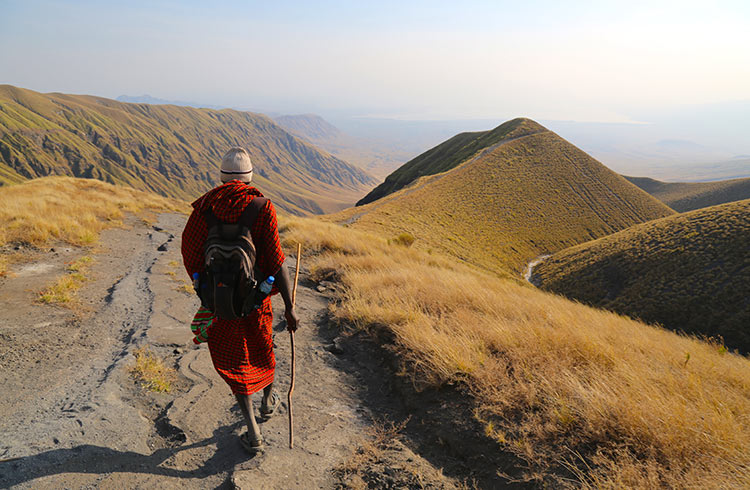 Photo © Graeme Green
Photo © Graeme Green
From the depths of a crater to the top of a volcano, Tanzania has a variety of hiking and trekking possibilities for hikers of all levels. Here, we've highlighted some of the best.
Before setting off on your Tanzania adventure, keep in mind that all of the hikes will require a good level of fitness, and plenty of water to keep you hydrated in the hot, dry climate. All treks and hikes should be done with a guide and armed ranger.
- Olmoti Crater
- Empakai Crater
- Ol Doinyo Lengai Volcano
- Empakai to Ol Doinyo Lengai Volcano
- Mount Meru
- Udzungwa Mountains
Olmoti Crater - Beginners
Olmoti Crater is an hour’s drive from the wildlife-filled Ngorongoro Crater, one of the best places in the world to see the so-called ‘Big 5’ wildlife encounters (lion, leopard, rhinoceros, elephant, and buffalo). Yet, just a fraction of the travelers that visit the crater delve deeper into the Ngorongoro Conservation Area to explore the other volcanic landscapes.
Olmoti is a pleasant, short hike into an ancient caldera. It takes around 40 minutes on a steadily climbing path, up to an elevation of 9,800ft (2,987m), to reach a view of the vibrant river valley below. You won’t see as much wildlife here as you will in the Ngorongoro Crater, but it’s likely you’ll see zebra and wildebeest grazing in the distance.
The path stops above the Olmoti waterfall, but it’s possible to walk (with your armed ranger) further across the grassy plains of the caldera, talking or singing to warn any sleeping lions or buffaloes that you’re coming their way.

Empakai Crater - Beginners
Located even deeper into Ngorongoro Conservation Area, part of the fun of hiking down into the Empakai Crater is the journey.
It’s about a two-hour drive from Ngorongoro Crater, but you’ll see plenty of zebra, antelope, wildebeest, and birdlife, as well as local people guiding animals across remote, wild landscapes.
The view from Empakai’s 9,000ft-high (2,743m) rim can sometimes be blocked by cloud, but, on a clear day, it’s an impressive sight, with Empakai Lake set far below, framed by the crater walls.
The quick, steep descent to the lake takes around 25 minutes through a forest, that has a pleasant soundtrack of birdsong. Occasionally, in the sandy path, you might see the footprints of some of the big cats who live around here. Around the salt-crusted edges of the lake, you have a good chance of seeing flamingos, blacksmith lapwings, and other birds.
The hike back up to the crater rim is tougher, especially at hot times of the day, and can take up to an hour.
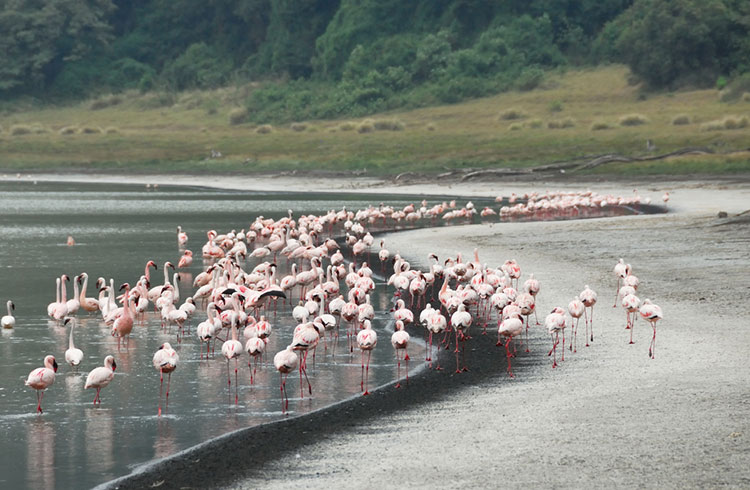
Ol Doinyo Lengai Volcano - Advanced
Climbing Lengai Volcano is not for the fainthearted. Known as the ‘Mountain of God’ (because local people heard rumbling from within, and thought it was the sound of God), the still-active volcano is accessed from camps around the edges of Lake Natron.
Check the cloud and weather conditions with your guide the evening before to make sure there’s a good chance of clear skies in the morning.
The hike usually starts around midnight, with a plan to climb with head torches and be at the summit in time to watch an epic sunrise. The five to six-hour hike is heavy going and is almost solidly uphill, climbing on a path of sometimes deep sand, and other times loose rock.
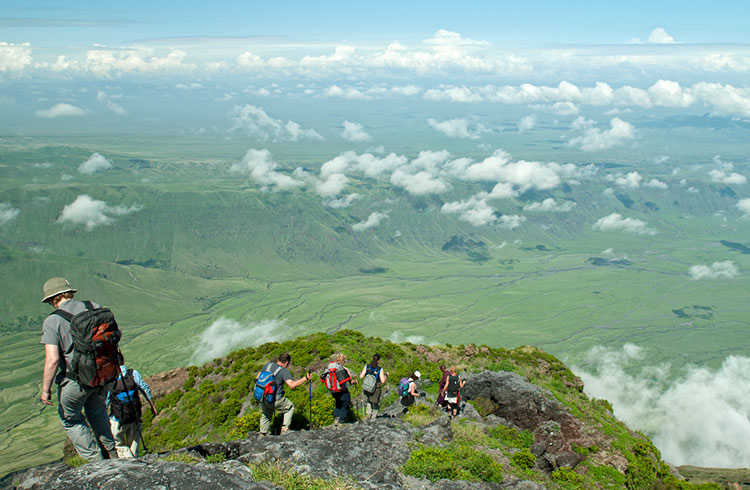
Empakai to Ol Doinyo Lengai Volcano - Advanced
You can climb Lengai and Empakai in isolation from around the Lake Natron area, or you can combine them on a two or three-day trek.
Starting from the rim of Empakai, you’ll trek through rolling hills, surrounded at times by forest and other times with plains that stretch to volcanic peaks.
You’ll also walk through remote Tanzanian villages, with simple wooden houses, where friendly and curious locals will come to say hello, and women in colorful robes lead their bell-clanging cows across fields to graze.
If you choose a multi-day trek, you’ll be camping out overnight (this can be arranged through tour operators, who provide the camping equipment and set up a camp ahead of your arrival), before making your way to Natron and Lengai the next day.
The walk starts early, to make the most of the cool morning, and will take most of the day. This trek requires a good level of fitness and plenty of water. The testing climb up Lengai is exhausting, so consider at least one night of rest around Lake Natron first.
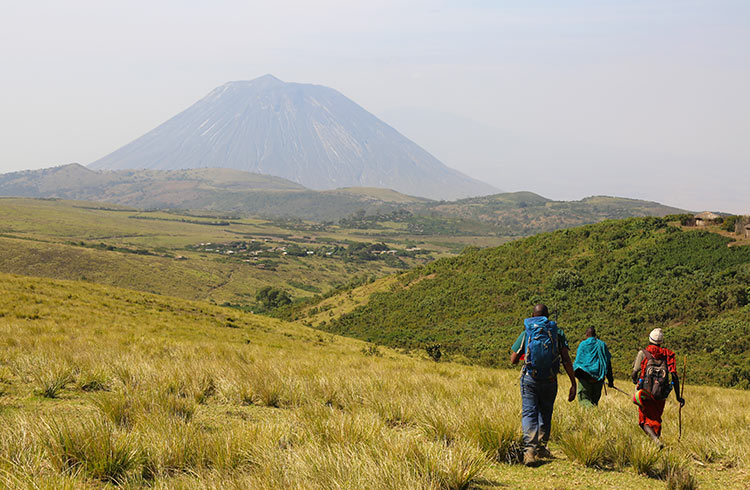
Mount Meru - Advanced
At 14,980ft (4566m), Mount Meru is the second-highest peak in Tanzania. It’s a fine trekking experience in its own right, as well as a good way to acclimatize before conquering Mount Kilimanjaro.
Located in Arusha National Park, around 50 miles (80km) west of Kili, Mt Meru is a challenging ascent that’s best completed over three to four days. Lower down, on the surrounding slopes, you have a good chance of seeing giraffes, elephants, buffalo, and warthogs, with the volcanic landscapes becoming more dramatic as you climb higher. Accommodation comes in the form of mountain huts along the trail.
Hitting the summit for sunrise is rewarded with unforgettable views of Mount Kilimanjaro and the Mount Meru Crater.
Udzungwa Mountains - Intermediate
Sometimes referred to as ‘the Galapagos of Africa,’ Udzungwa Mountains National Park in southern Tanzania has an incredible diversity of tropical flora and protected wildlife, including leopards, lions, elephants, African wild dogs, and primates, including the endemic Iringa red colobus monkey.
It’s also a top destination for hikers, with trails across the vast national park. The trails range from short, scenic walks to challenging climbs up Mwanihana Peak; a 23-mile (37km) one or two-night trek, or the even longer 40-mile (64km) Lumemo Trail which takes approximately five days.
The most popular hike, is the two to three-hour walk to Sanje Waterfall, with its spectacular 600-ft (183m) cascade. Not only do hikers get the reward of the falls and a cooling dip in pools at the end, but there’s also a chance to see the endemic Sanje Crested Mangabey monkeys, squirrels, and red duiker along the way.
Related articles
Simple and flexible travel insurance
You can buy at home or while traveling, and claim online from anywhere in the world. With 150+ adventure activities covered and 24/7 emergency assistance.
Get a quote
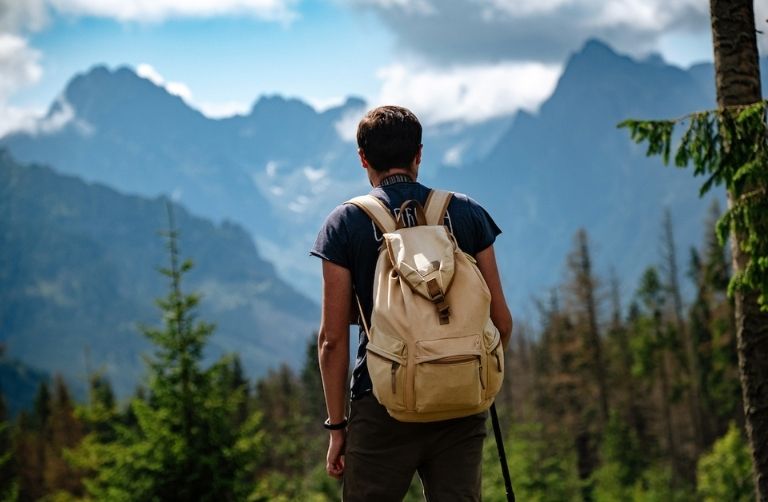
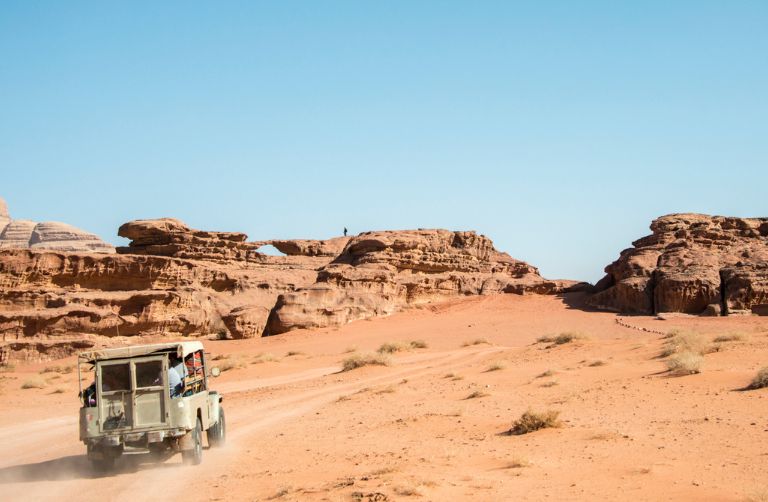
1 Comment
AFRICA IS VERY BEAUTIFUL.